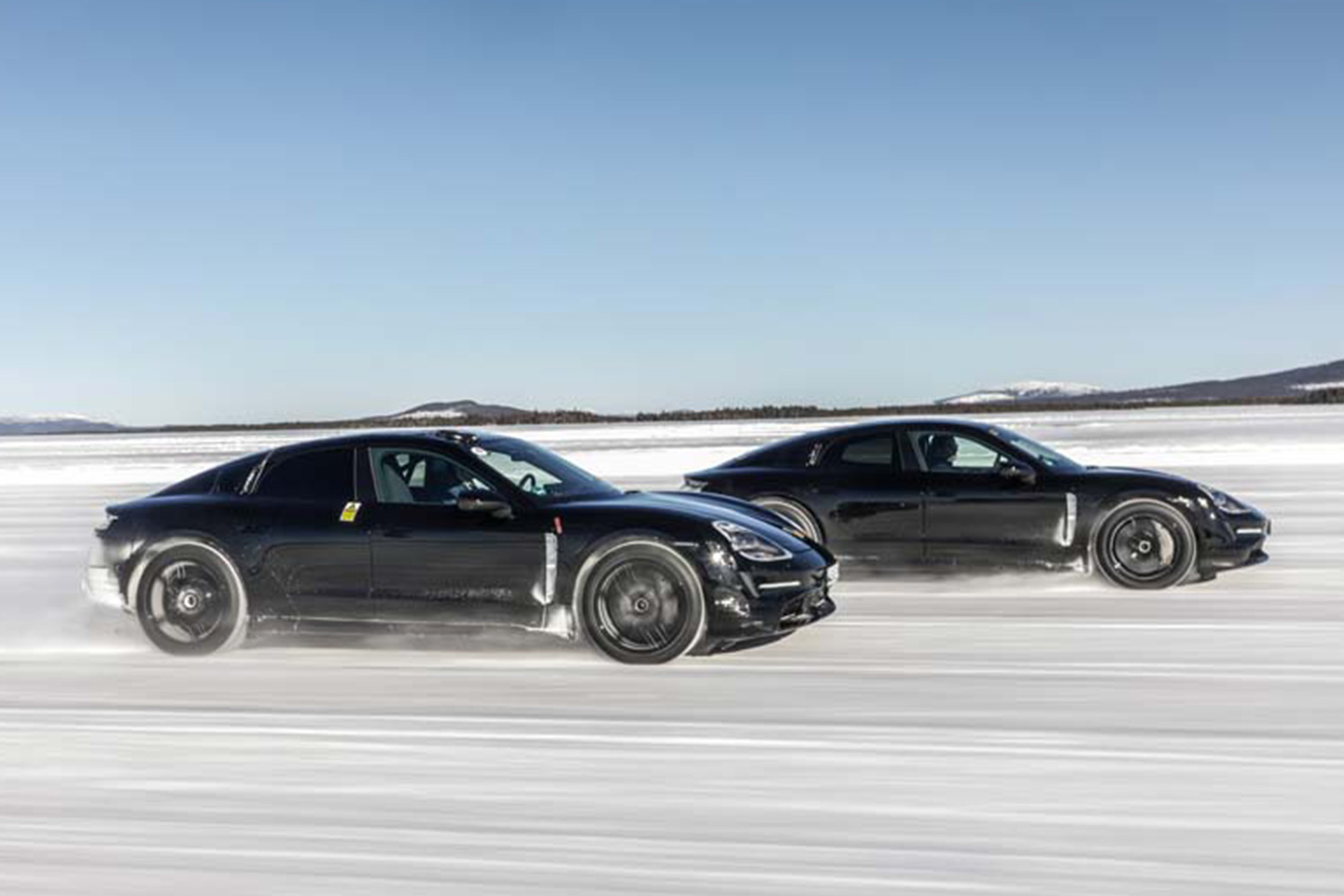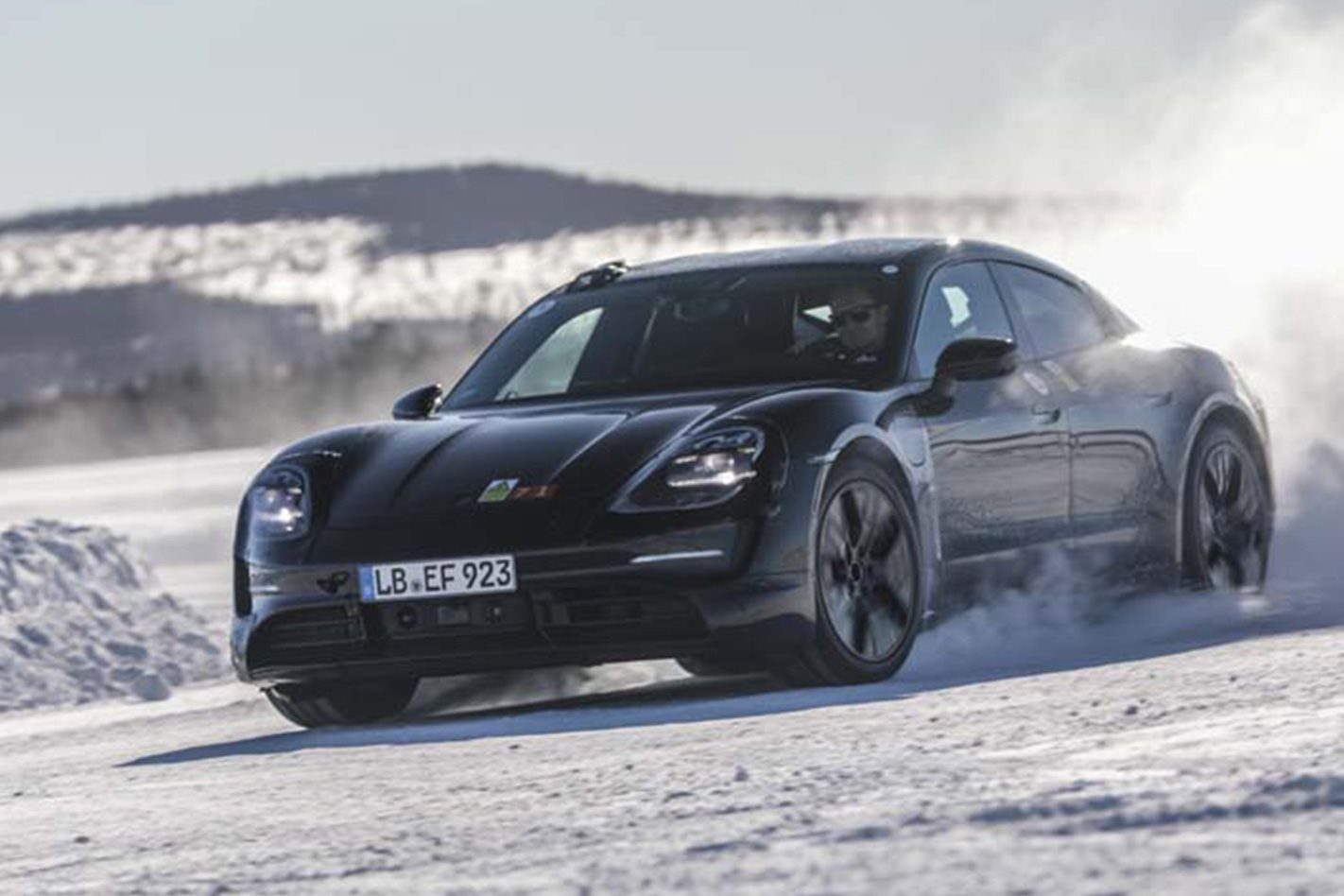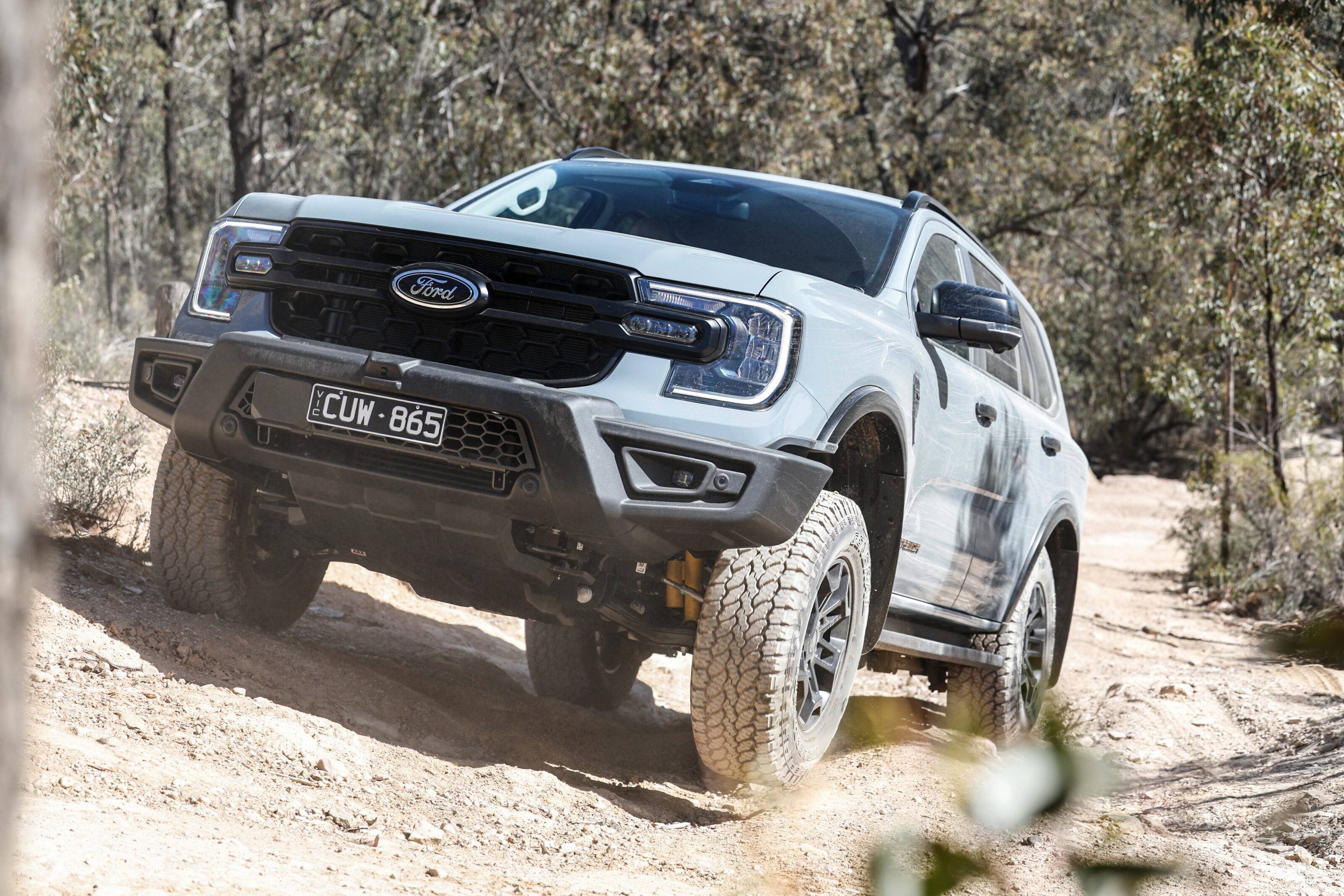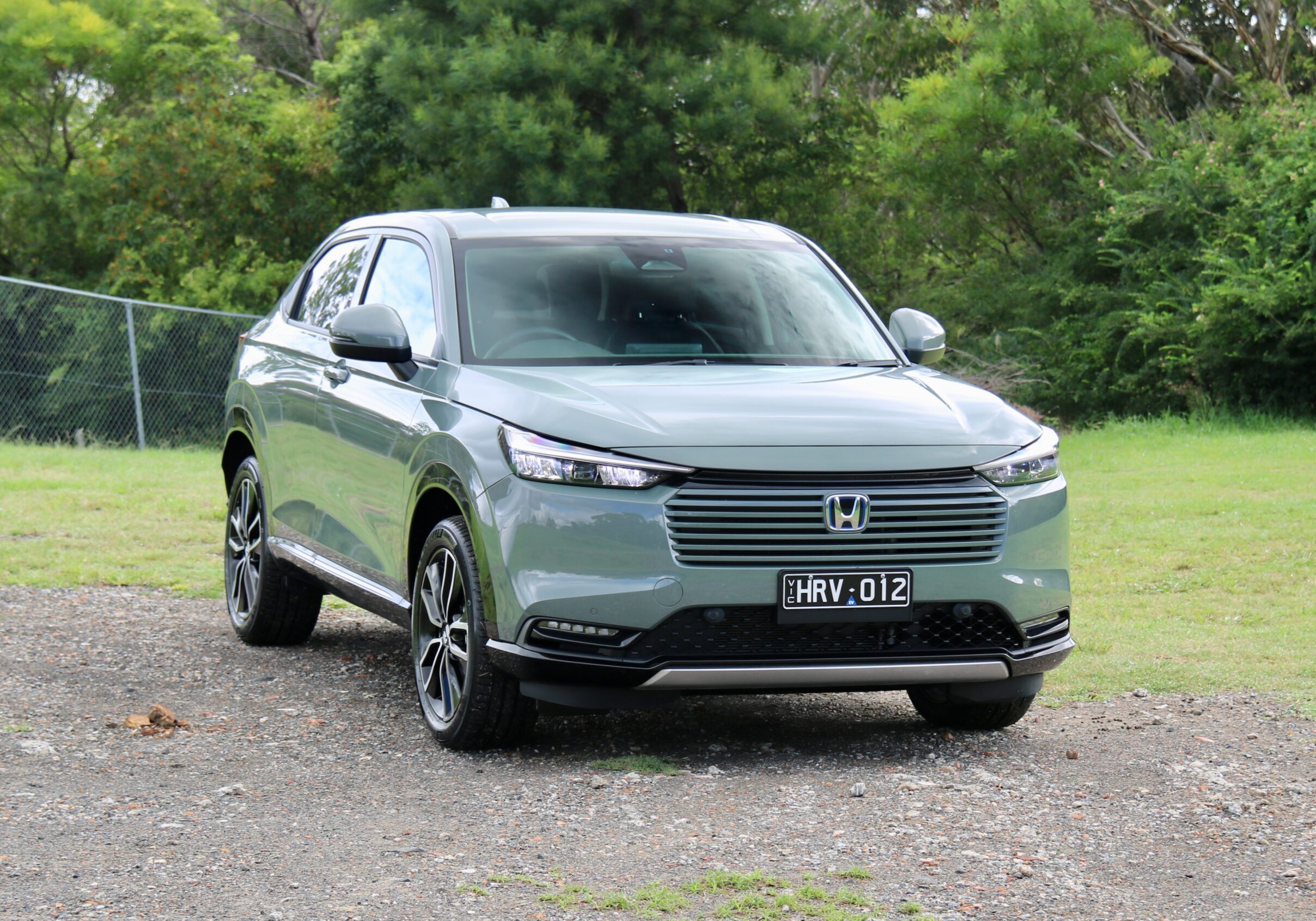‘So what do you want to do now? We could go and do some doughnuts,’ said the chassis engineer with ill-disguised hope in his voice. Out here in the frozen wastes of northern Sweden it seemed almost obligatory to go and scribe some circles in the snow. Which is how I found myself rotating at impressive speed in a Porsche Taycan, at least until it rumbled what we were up to and started flashing rude messages at its driver. ‘It’s the same in all our four-wheel-drive cars,’ sighed Christian Wolfried, Porsche’s handiest hand on the Taycan programme. If I understand correctly, the front and rear axles have a bit of a pow-wow, figure out they’re being asked to do dramatically different things, rapidly conclude the driver’s a lunatic, and shut the show down.

I mention this now because it seems that Porsche’s intention in inviting me to Lapland was to re-iterate the fact that despite the Taycan being powered by electricity alone, it remains above all a Porsche.
Disclaimer: I have not driven the Taycan, I have merely sat next to someone driving the Taycan. Can I tell you that what I felt that day had everything to do with the deftness of its chassis and nothing whatever to do with the evident skills of its driver? Of course not. And even if I could, would I be able to accurately estimate how behaviour on a frozen lake and roads covered with snow translated to what most of you recognise as more conventional conditions? Not with any confidence.
Is the Taycan a proper Porsche?
There is still plenty to be learned and plenty to be said, not least because, by Porsche’s own estimation, the Taycan is its most important new car since the Cayenne transformed the business beyond all recognition in 2002, and quite possibly the 1963 launch of the car that became known only sometime thereafter as the 911.
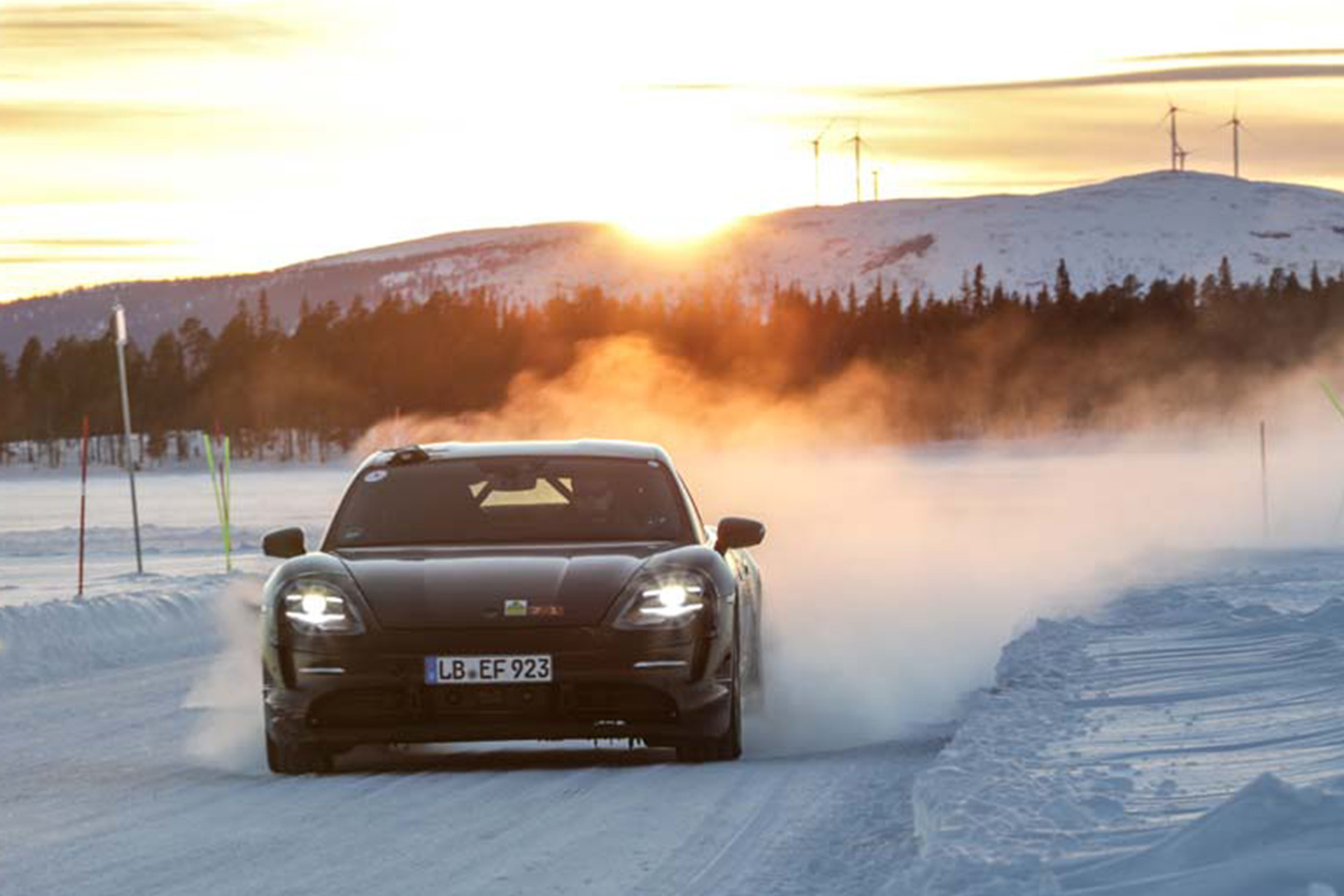
The first surprise is how small the Taycan feels. It’s a four door car, but because you know there’s a more off-road-oriented ‘Cross Turismo’ version coming, you mentally file it somewhere between a Panamera and a Macan. Or at least I did. But that’s not how it feels. No official dimensions have yet been issued, but based on what is known from the Mission E concept from which it is derived, the car is around 4.85 metres long, compared to well over five metres for the Panamera. Its wheelbase is far shorter too – not 911 short, which only needs occasional rear seats and positions its engine outside the wheelbase – but short enough that with four-wheel steering it changes direction with startling alacrity.
Behind the wheel it feels far closer to a 911 than a Panamera. The driving position is low, the centre console rising up commandingly beside you. As a result it is very much a car you sit in like a sports car rather than a family car. And that is entirely deliberate: Porsche knows it has a job on its hands convincing the world that electric cars and sporting cars are not diametrically opposed objectives, and if it can create the ambience of a 911 it will have gone some distance towards nailing that challenge. And even in the disguised prototypes in which I travelled, I can say with certainty that this at least has been achieved.
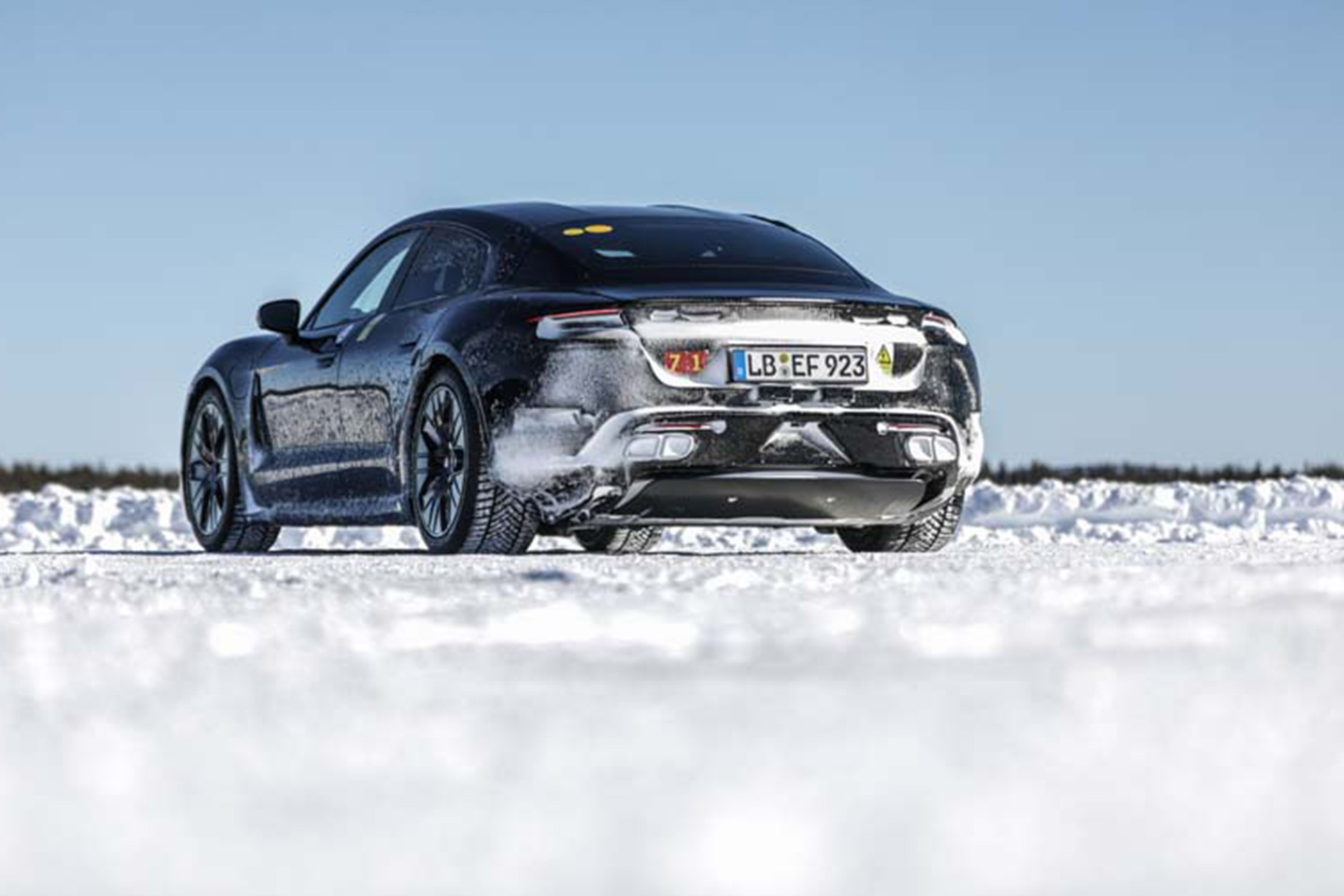
Sparking a new kind of excitement
So Christian and I head out into a blizzard. So far as I can see, it’s a complete white-out, as disorienting as flying a light aircraft through cloud, but he pretty much lives up here over the winter and does not let such trifles bother him. A barely discernible track has been cut into the snow so he goes to work, apparently guided by bat-like sonar.
Would you be surprised if I told you the Taycan sounded like it had a cross-plane V8 under the bonnet? Me too. It hasn’t and it doesn’t. Porsche is big on authenticity and it sounds like an electric car because that’s what it is. The strategy will be to engineer out as much of the whines and whirrs of these very early prototypes so that there is minimal noise. It’s ‘the luxury of silence’ as one Porsche person put it to me. I expect we’ll hear rather a lot of that particular sound bite in the near future. Oddly enough, there will be an additional and optional ‘sound pack’ customers can choose.
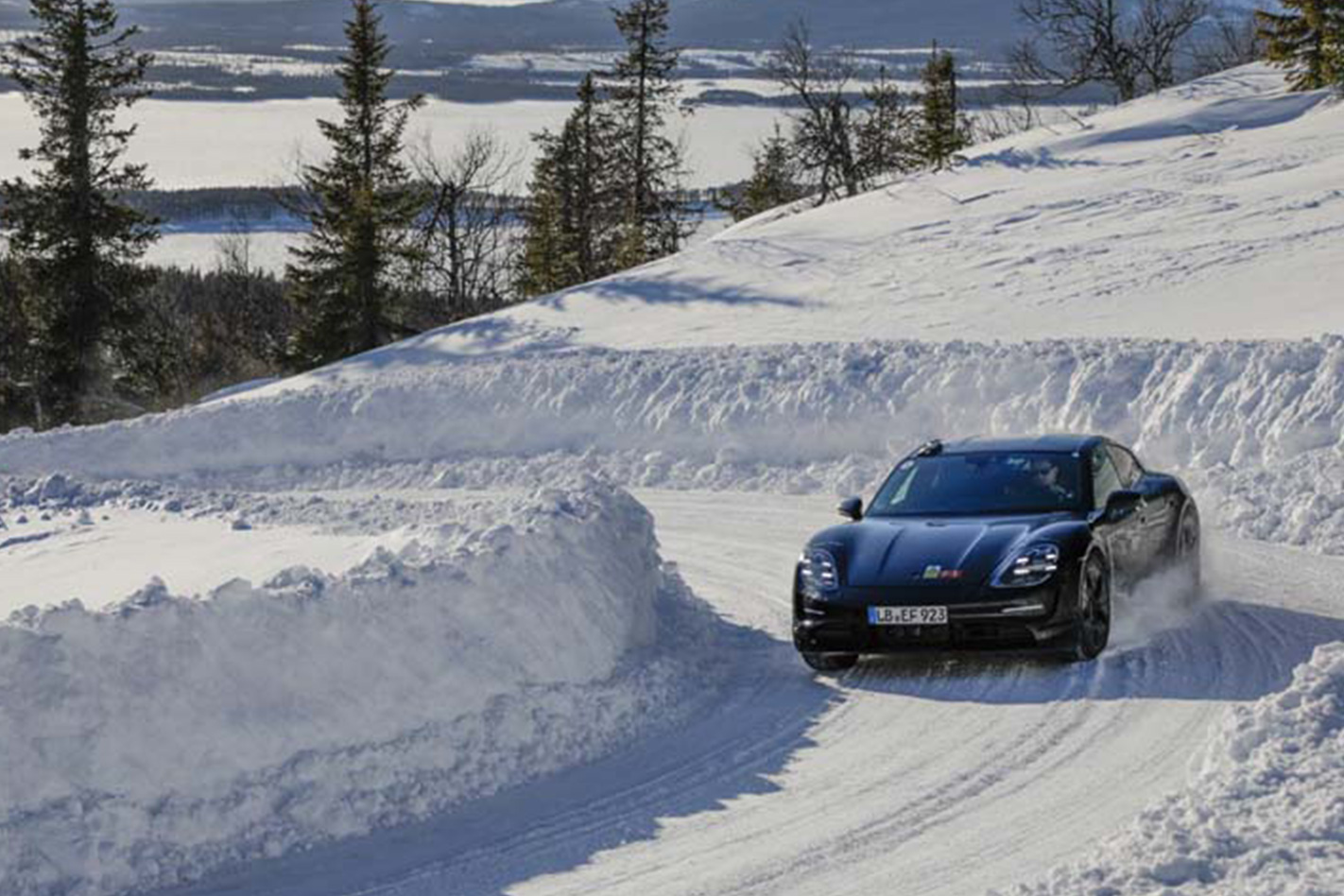
The car I’m in is the top of the range model but the truth is it’s snowed for much of the night and a Fiat Panda 4×4 would probably be able to spin all four wheels on the surface it’s left, so at least half of the over 447kW at Christian’s disposal is superfluous to requirements.
No matter. The car feels spectacularly composed with all its electronic safety equipment turned on. I get him to do a full bore standing start and the car just accelerates away as if on tarmac, and not at all slowly. Put it this way: an original Boxster on dry tarmac would have no chance against this thing on snow. In Sport Plus mode the car maintains the same direction but sashays somewhat as it does. Turn it all off and were he not there to correct it, it would carve a semi-circle very quickly indeed. It’s good to know that even in these increasingly risk-averse times, at Porsche, off, still means off.
Then the track starts to wind. Porsche deliberately keeps it as narrow as possible because the engineers don’t want discrepancies caused by drivers taking different lines. The engineers all keep note of who has to call how often for the Cayenne tow truck to dig them out of the drifts. Christian’s only binned it once all winter; some of his colleagues are in double figures. As speeds rise, the Taycan becomes ever more balletic as my driver delights in showing me the angles it can not only reach, but be easily recovered from. He says because of the way the motors mete out their power and the fact the Taycan has the lowest centre of gravity of any Porsche, it is the easiest to drift out of the entire bunch. And just to make the point, when we reach an enormous circle cut into the ice, he does a few laps at high speed with the nose pointing directly and unwaveringly at the circle’s centre, chatting away as he does.

Even so, if the business of getting any kind of impression from a passenger seat is hard, it’s harder still on a frozen and featureless lake where the ice is three-feet thick. So after lunch I head out onto the roads with Bernd Propfe, who is project manager for the whole Taycan platform. While the architecture will be adapted and adopted by Audi for its E-Tron GT (and possibly Bentley for a production version of the EXP12 6e concept car), it is an entirely Porsche-led project.
Out here nothing is simulated, the Taycan remains unprovoked by its driver. All the systems stay on. It is entirely possible an elk might wander out onto the road, and they tend not to give way. The surface is compacted snow and ice. It is not a place to mess about.
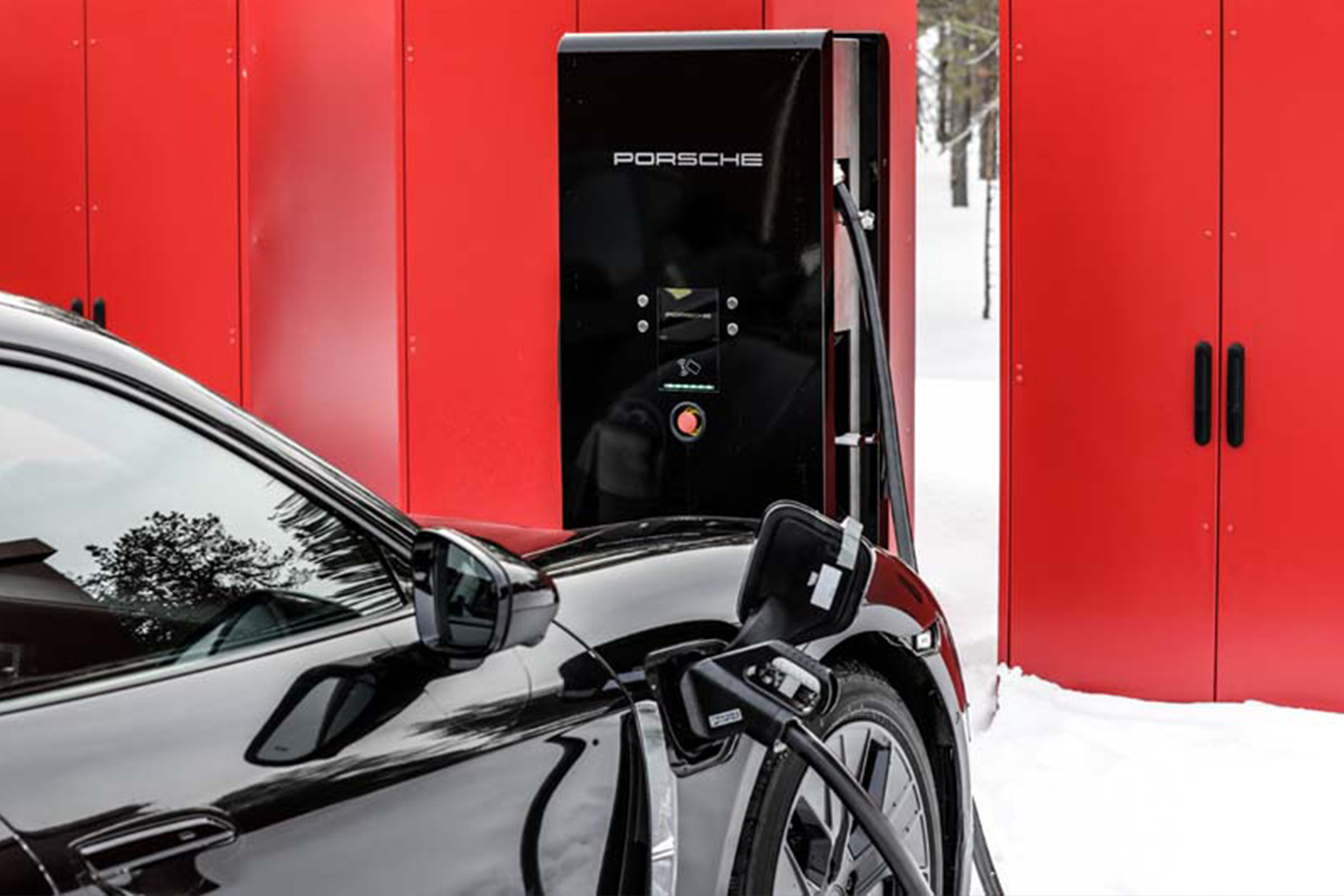
And yet we go fast: there’s a Taycan ahead and another behind and our convoy is somehow proceeding across this pretty hostile terrain at a pace that is not so much impressive as borderline befuddling. We’re on winter tyres of course, but nothing out of the ordinary and certainly not studded. It’s not just a comfortable way to get about, out here it’s comforting too, because the composure of the car is totally reassuring. If I’d not already done all the work on the lake, I’d have presumed Propfe and his chums had gone mad. Ironically, the only drama comes when we reach a bridge offering the only stretch of dry tarmac for miles around. He knows it’s coming so slows to a crawl before pinning his foot to the floor. And even though there’s well over two tonnes of Taycan to accelerate, it gathers momentum at a rate that suggests the 3.5sec 0-62mph sprint claimed for the Mission E concept that begat the Taycan is now looking very conservative indeed.
Sadly, however, there is not much more I can tell you other than that it will seat four average sized adults in reasonable comfort. If there’s a tall one in the back, though, he or she will likely feel a little short of room. A Panamera is substantially more spacious.
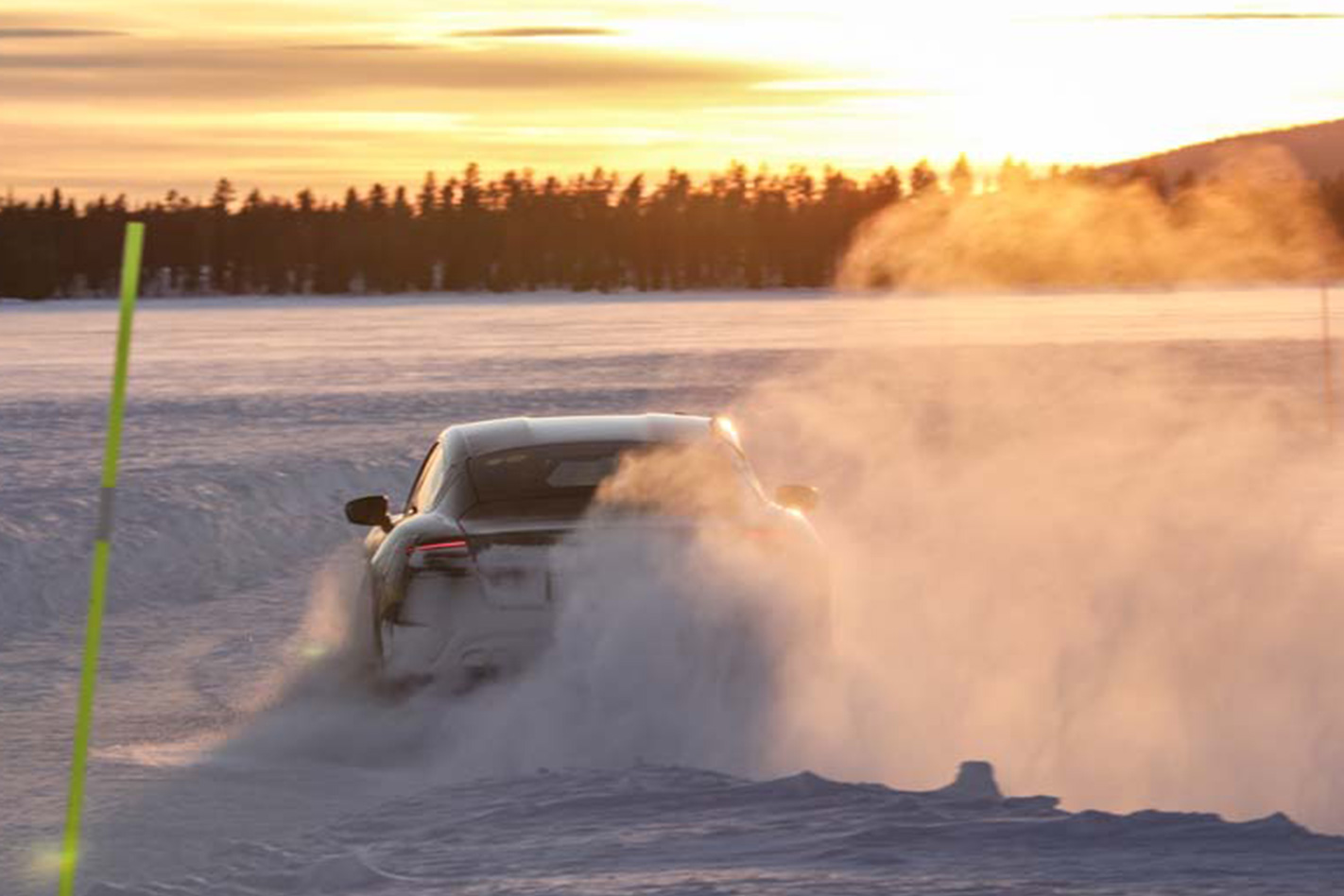
The remaining pieces of the puzzle won’t be slotted into place until September when the Taycan is formally unveiled and drives begin ahead of cars being delivered to owners before the end of the year.
It’s still a Porsche, just not as we know it
So what can I say that is certain? Well, if a huge diesel-powered SUV can credibly call itself a Porsche, so can a compact electric four door coupe like this. It’s smaller than you think and feels even smaller than it is and, so far as I could tell, lighter too. On low grip surfaces it is both agile and tolerant of the most preposterous of provocations.
But it felt also like a car with a proper story to tell, one I’ve only been able to provide in patchy outline here. If it can find that sweet spot where it combines something of the practicality of a Panamera with something the ambience of a 911 and a relevance to the world as it is today, I think Porsche could really be onto something here. It’s a big ask, and I don’t yet know the answer. But the indications seen so far, and they can be no more than that, are good.
